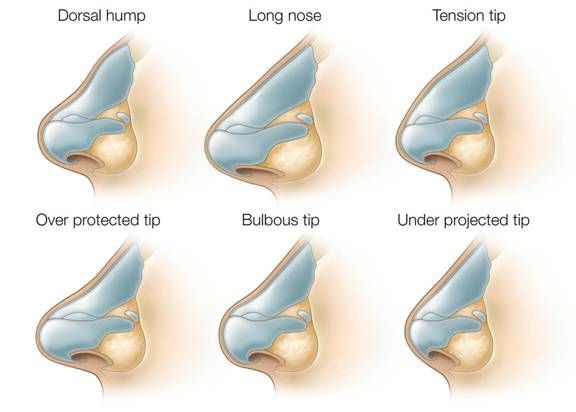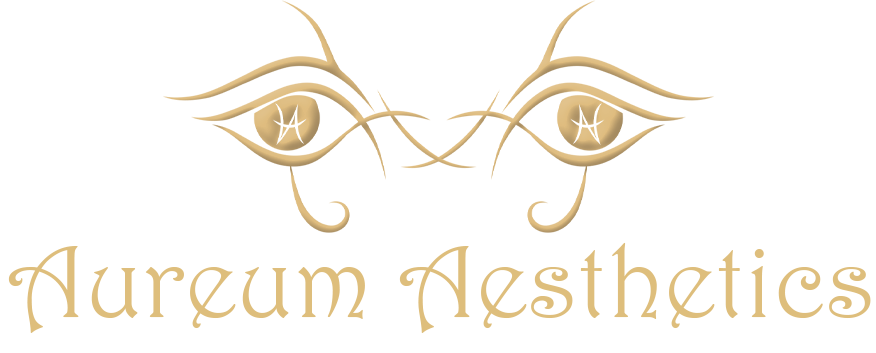Rhinoplasty and Revision Rhinoplasty
Primary Rhinoplasty (first-time nose surgery) and Revision Rhinoplasty (revision nose surgery) are often described as the most challenging and technically difficult operations in plastic surgery.
Nose Types

Who are Candidates for Rhinoplasty?
The best candidates are healthy people with realistic expectations of surgery. Some of the common reasons patients seek surgical correction are crooked nose, wide or boxy nasal tip, droopy tip, and dorsal nasal “hump”. In case of revision rhinoplasty, surgery is even more difficult as there may not be enough cartilage support to the nose, or when there is already a perforation of the nasal septum. With both, revision and primary rhinoplasty, there is always a possibility that a “touch up” procedure will be required.
How is Rhinoplasty Performed?
Rhinoplasty is performed under general anesthesia in an operating room. On average, the surgery takes between 2-4 hours. Breathing issues can also be addressed during the same time. The surgery can be performed with incisions completely inside the nose (endonasal or close approach), or with a small incision on the outside of the nose (external or open approach). Approaches and details vary depending on the patients and their aesthetic goals. During your consultation, the doctor will advise whether the endonasal or external approach is more suitable in your case. In external or open approach, the incision is placed across the columella and generally heals extremely well.
What is Recovery Like?
Patients wear a small plastic splint on the bridge of the nose for minimum one week following surgery. Patients also may have packing inside the nose. Depending on the case, there may be small stitches underneath the nose, and/or around the nostrils for one week. If the nasal bones are broken, you should expect black eyes for approximately 10 days. Swelling and stuffiness are common for the first few weeks following surgery. Nasal precautions should be followed for two months following surgery. These includes no pressure (including glasses and sunglasses) on the bridge of the nose, no nose blowing, nose picking, or nose squeezing. Down time from school or work is one to two weeks. Healing from rhinoplasty is a gradual process. You should expect to see 50-75% of your final result in one month following surgery, 90% in 6 months, and a full 1-2 years to see the final result.
Asian Rhinoplasty is its own category due to differences in Asian aesthetics and characteristic structure of the nose. Common aesthetic concerns for Asian patients are lack of bridge and dorsal height, short nose, bulbous/ill defined tip, and wide hanging alar. Most often, Asian patients seek rhinoplasty to have a higher nose bridge/dorsum and an overall more refined nose.
What are the structural differences that make Asian Rhinoplasty challenging?
Asians typically have wider nasal bones, softer and smaller nasal cartilages, and thicker and tighter skin. These characteristics ought to be evaluated at the initial consultation and accounted for during surgery to attain the desired goals.
Majority of Asian rhinoplasties performed in the world are performed with silicone implants. However, these implants have very high overall complications requiring revision, reported range between 10-40%. Main complications are foreign body reaction, implant infection, implant exposure, and capsular contracture (scar forming around the implant). All of these require surgical removal of implant and revision rhinoplasty to restore and possibly improve the appearance of the nose. To avoid these implant related complications, structural rhinoplasty with cartilage graft (from ears, ribs, allograft) is recommended.
Alar Reduction is often an ancillary procedure performed along with rhinoplasty to reduce the nostril size to better suited the patient’s face and new nose size. However, it can also be done as a standalone procedure if the nostril size is the main aesthetic concern of the patient. Depending on which elements of the nostril are the main contributors to the nostril size, alar reduction can be performed through a small cut inside the base of the nose (basal sill reduction) and/or a small cut along the side of the nostrils (Weir’s excision). The scars are well camouflage along the natural creases of the nose and generally no longer noticeable by 6 weeks after surgery.


